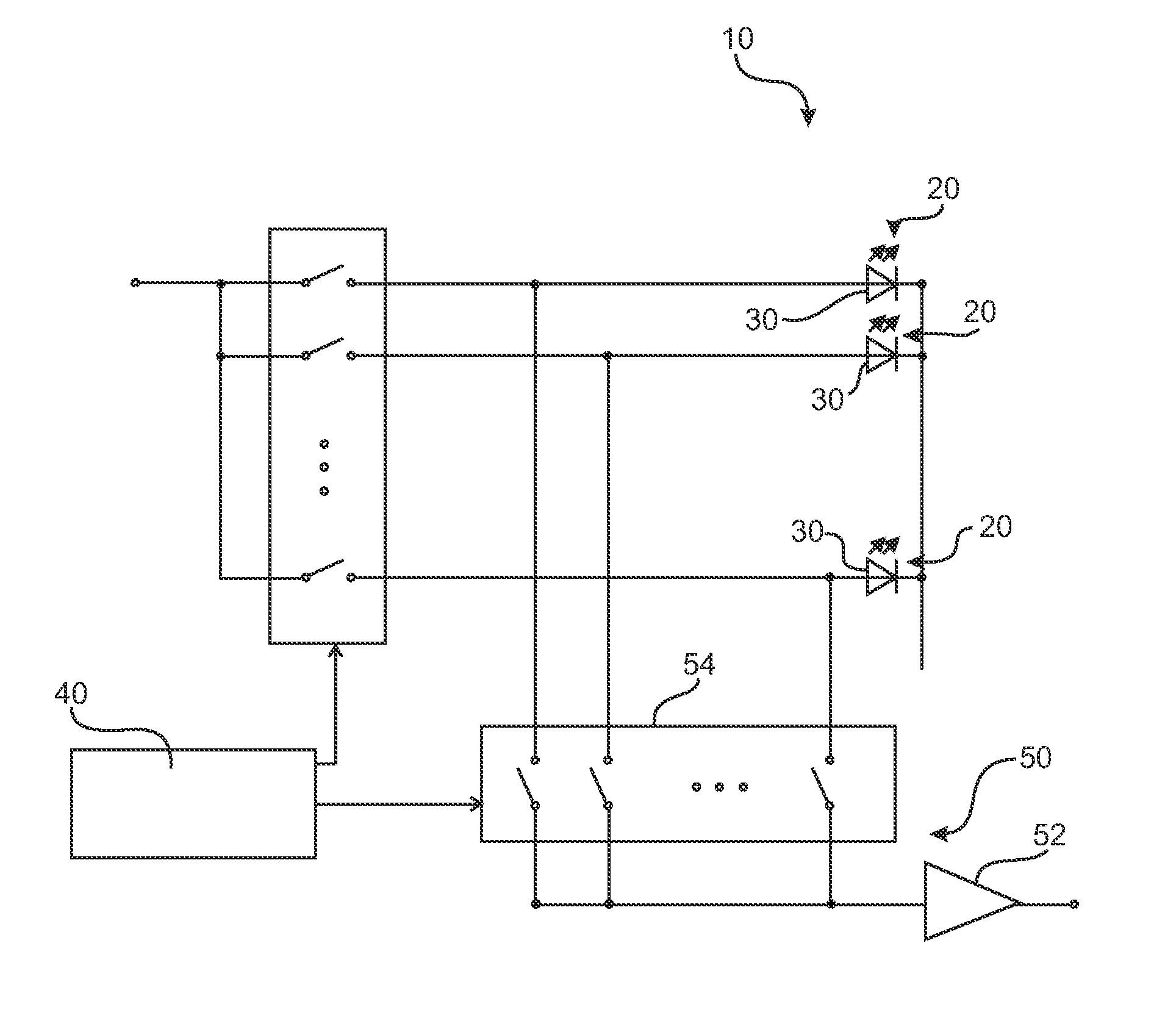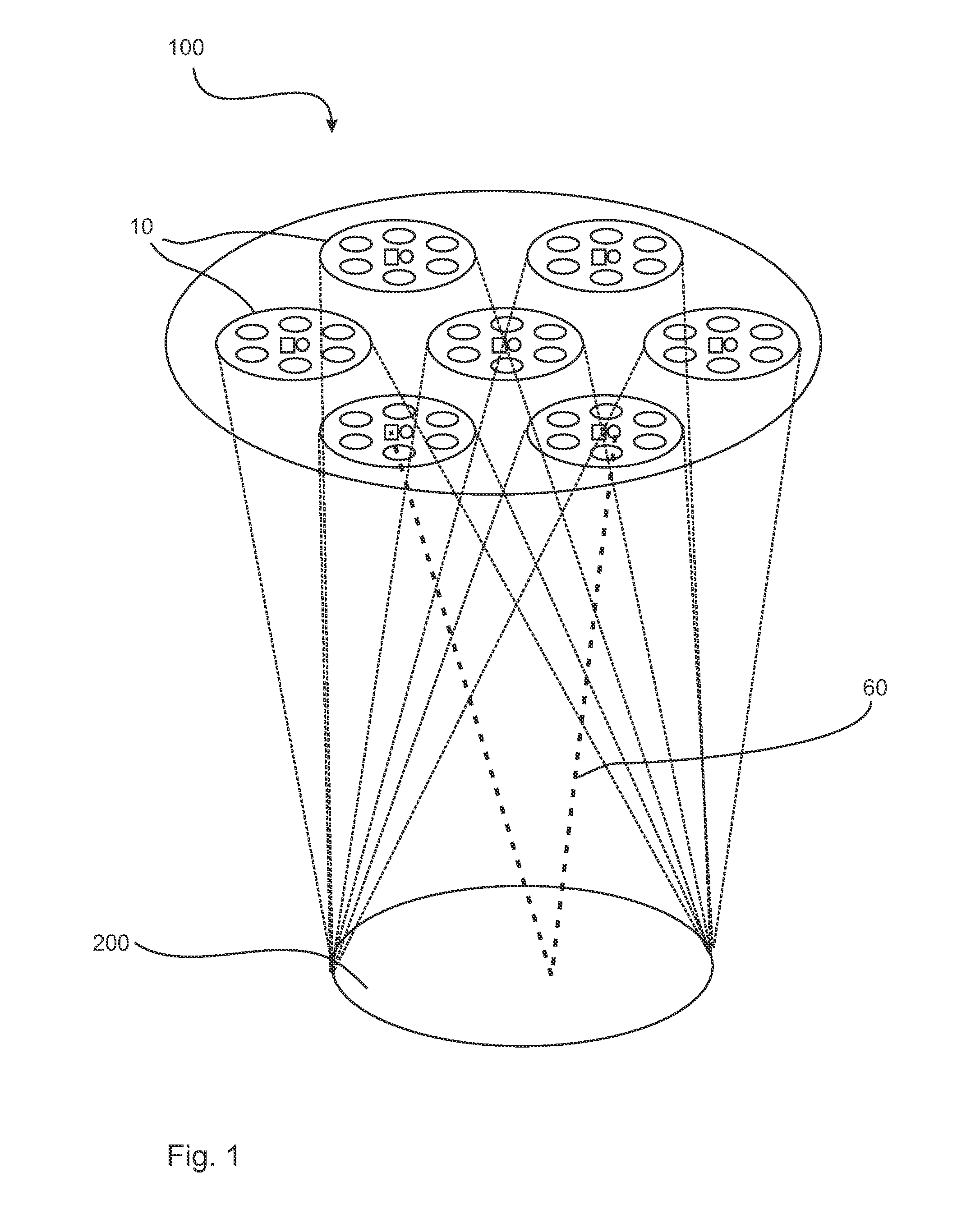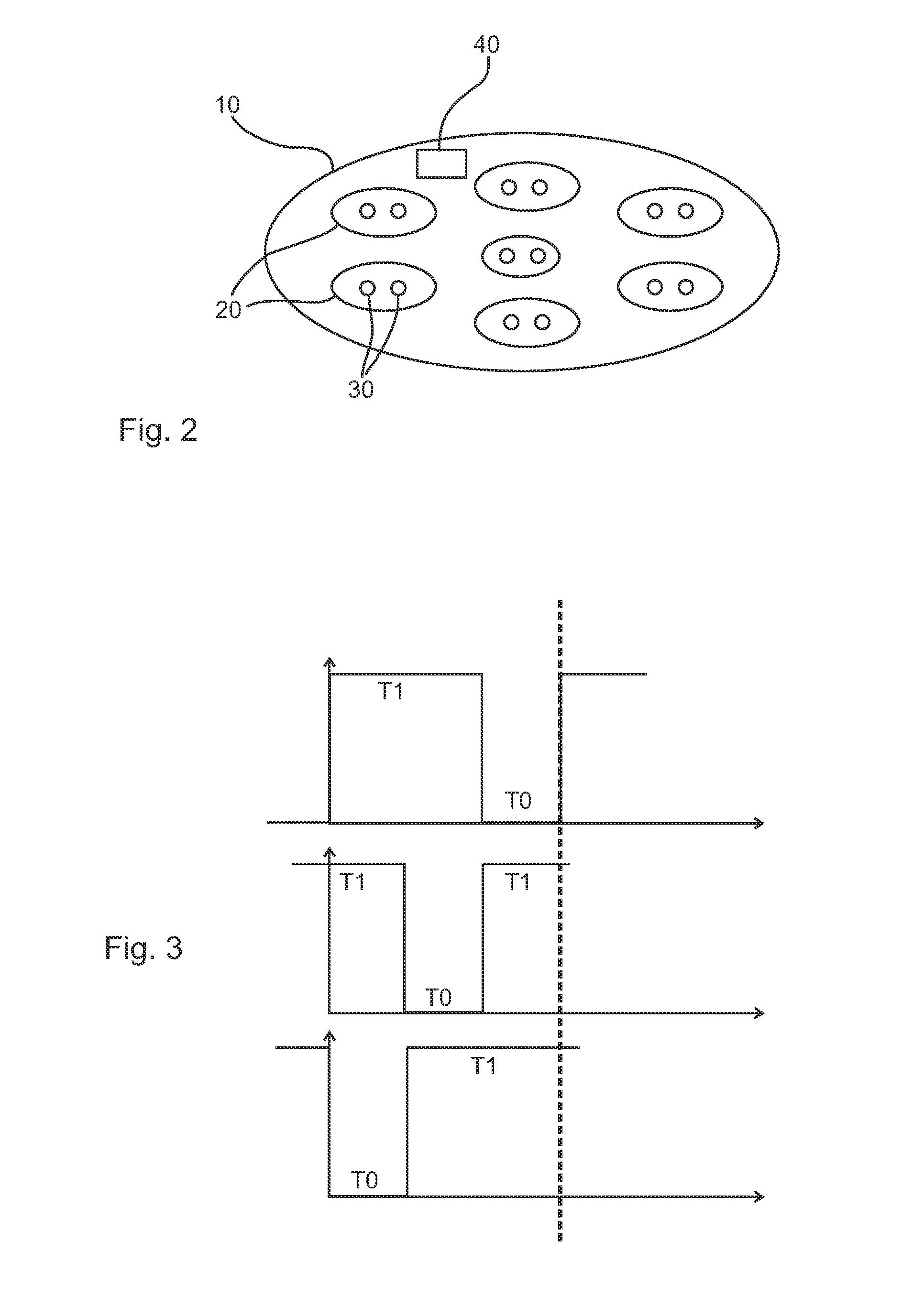Process for the detection of optical signals
a technology for optical signals and processing methods, applied in the direction of electroluminescent light sources, electroluminescent transceivers, electric lighting sources, etc., can solve the problems of increased overall size of prior-art light modules, additional detectors, and additional space, and achieve low cost, low design effort, and cost-effective and simple manner
- Summary
- Abstract
- Description
- Claims
- Application Information
AI Technical Summary
Benefits of technology
Problems solved by technology
Method used
Image
Examples
Embodiment Construction
[0034]Referring to the drawings, FIG. 2 shows an embodiment of the light module 10 according to the present invention, which has a total of seven light sources 20. Each of these light sources 20 is provided with two LEDs 30 in this embodiment. At least two light sources 20 with at least one LED 30 each are provided as the minimum according to the present invention. Further, the embodiment according to FIG. 2 has a computer 40, which is designed especially to carry out a process according to the present invention. This computer 40 also performs the pulse width modulation of the individual LEDs 30 in order to control the light intensity of the light module 10.
[0035]FIG. 1 shows an illuminating device 100 as it can be used, for example, as a lighting fixture for an operating room. A total of seven light modules 10, which may be designed especially according to FIG. 2, are provided in this embodiment. All light modules 10 illuminate an illuminated area 200 together and overlappingly. Th...
PUM
 Login to View More
Login to View More Abstract
Description
Claims
Application Information
 Login to View More
Login to View More - R&D
- Intellectual Property
- Life Sciences
- Materials
- Tech Scout
- Unparalleled Data Quality
- Higher Quality Content
- 60% Fewer Hallucinations
Browse by: Latest US Patents, China's latest patents, Technical Efficacy Thesaurus, Application Domain, Technology Topic, Popular Technical Reports.
© 2025 PatSnap. All rights reserved.Legal|Privacy policy|Modern Slavery Act Transparency Statement|Sitemap|About US| Contact US: help@patsnap.com



